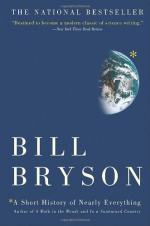|
This section contains 453 words (approx. 2 pages at 400 words per page) |

|
Part 4, Chapter 15 Summary and Analysis
In the 1960s, Bob Christensen was studying Yellowstone's volcanic history, when he was struck by a perplexing problem. Although everyone agreed that Yellowstone's geysers and hot springs were the result of volcanic activity, no one could find the volcano. Just at that time, NASA forwarded some satellite photos of Yellowstone National Park to Christensen. He immediately realized that virtually the entire park was a volcano.
Most people think of volcanoes as mountains, like Fuji. In most cases, however, the explosion creates an open pit called a caldera. Yellowstone's pit is 2.2 million acres, a crater more than 40 miles across. This is the permanent record of violence far beyond anything known to humans. The supervolcano rises from 12.5 or more miles down in the Earth. All of the National Park rests on a lake of magma 45 miles across and eight miles thick...
(read more from the Part 4, Chapter 15 Summary)
|
This section contains 453 words (approx. 2 pages at 400 words per page) |

|




